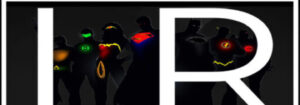I had as much fun reading this maxiseries as much as I had writing this review. Going through Alan Moore’s Watchmen (1986) is one of life’s most memorable experiences. I would also count it as a preferred one-time pleasure as re-reading the series wasn’t as eye-opening as the initial experience. Still, Watchmen has frequently been hailed as the greatest graphic-novel ever written, year after year, by both readers and critics alike. So, after watching Zack Snyder’s 2009 adaptation I found that many crucial elements weren’t elaborated on—and this was what made the source material better than the screen-version, as every character and subplot was profoundly expanded upon.
DC’s Watchmen follows the murder of a government-hired superhero, The Comedian, and the subsequent investigation by two of his former allies. Due to this killing, most of the former heroes come out of retirement to get to the bottom of Rorschach’s Mask-Killer theory (that someone or a group of people are fatally targeting former superheroes and supervillains).
What I adored most about Watchmen was the balanced amount of time given to each and every major character. Some issues are almost entirely devoted to both the backstory and current predicaments of a particular hero, whereas others feature tales of all the figures connected to each in other in a certain subplot. In some parts, Watchmen features a non-linear story structure whereas in others it is composed completely in procedural form. This does lead to confusion in some instances, but just like Christopher Nolan’s movies connect the dots at the very end, so does Moore masterfully let the pieces fit together perfectly in the conclusion.
I also liked how the five heroes couldn’t have been depicted with personalities that are furthest apart from each other. The Silk Spectre is the only one of them who is female and has many mommy issues (her mom was the first Silk Spectre and she brought her into the crimefighter career quite early on). Ozymandias (named after the poem by Perce Bryce Shelley) is regarded as the world’s smartest man. The Comedian is an antihero who is more of a patriotic mercenary than anything else. Nite Owl is the most traditional of them all, owning Batman-like gadgets and a vehicle to rival the Batmobile, with a suit like the Dark Knight as well. One quality which he and Bruce Wayne don’t share is the former’s optimistic mindset, and though the name implies darkness, Nite Owl is one of the most forward-looking of DC’s superheroes. Doctor Manhattan is a being with godlike powers and the only hero in the series to have actual superpowers. Rorschach is the group’s realist who is the epitome of anti-hero. He is a brilliant detective with an investigative intellect rivaling that of the Dark Knight, albeit without the technology and wealthy background, but most importantly, he lacks the morality of “Thou shalt not kill”.
I have to say that the antagonists featured were either weak, retired or had died after the Keene Act had been passed in 1977—which banned costumed vigilantism except that done by government-owned individuals such as The Comedian and Dr Manhattan. Knowing that there’s no way to confront the latter, the supervillains cease to operate as well. Two of the heroes are the second iterations of Watchmen’s golden-age roster such as Silk Spectre (as previously mentioned) and Nite Owl (who took over when the original crusader, who was also his inspiration, retired from crimefighting).
At this point, majority of this review’s readers would be curious how the past events were told without ruining the momentum of the present storyline. This is done by one of the most unique aspects I’ve ever witnessed in any graphic-novel: Attaching news-pieces, letters, book chapters, etc. at the end of every chapter save for the final one. Sometimes we get a newspaper article about one of the past events briefly discussed in an issue, and at other times, biographical information comes from letters, journals, books or any other material written by our heroes, both the old and the current ones. So four to five pages of these makes up for a separate ten pages to tell a tale. Also, it brings a fresh perspective to the current chapter before you begin the next one.
Watchmen, like Mark Millar’s Superman: Red Son (2003), also incorporates a prominent political theme. This alternate take on American history of the 50s to 80s showcases that with the aid of Doctor Manhattan, America has won the Vietnam war, and the Watergate Scandal never occurred. Also, without a clear antagonist, most of the readers’ time is spent dealing with the psychology of the protagonists, who at second glance, don’t seem so righteous after all.
However, Watchmen had one notable flaw and that was the depiction of Doctor Manhattan and Ozymandias. Both characters are larger in life and in fiction that isn’t a bad thing. But both figures’ personalities are quite irksome. Manhattan’s lectures about nihilism and Ozymandias’ homage to Alexander the Great do well to make the figures distinct, but at times both the actions and dialogues of these heroes are quite vexing. They didn’t have to be likeable but should’ve been at least illustrated as comprehensible. Nevertheless, the finale makes up for these tiny distractions, culminating in the best comic-book closure I’ve ever witnessed.
All in all, Watchmen is an adult-story of war, betrayal, love, freedom and almost everything that makes us human. It discusses so many philosophies that I can’t count most of them. Dave Gibbons’ artwork is incomparable as he also intertwines the main storyline with that of another comic, Tales of the Black Freighter, which a secondary character reads. So, it’s sort of a comic-inception; a comic within a comic. I also commend Gibbons for portraying both love and hate, in the form of sex and crime, so brilliantly that it forms an unparalleled juxtaposition of fictional elements showcased in a limited edition. If you haven’t read Watchmen, you have missed the finest graphic-novel ever written.


